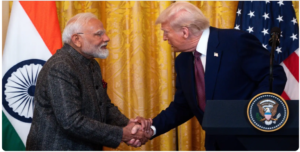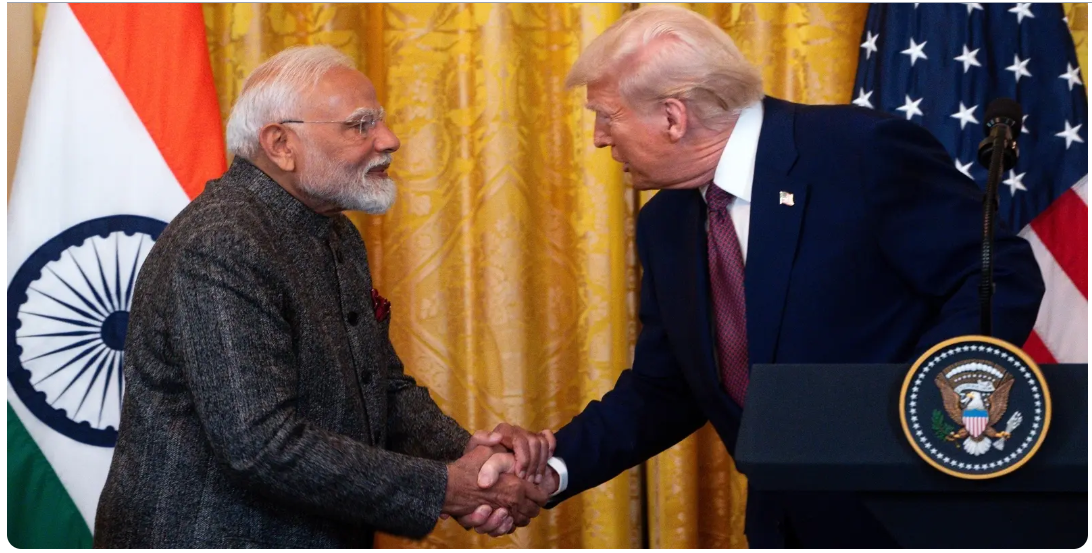
India’s defense capabilities have been a topic of discussion globally, especially when it comes to acquiring next-generation fighter jets. Recently, former U.S. President Donald Trump suggested that the United States is willing to sell F-35 fighter jets to India. This has led to significant geopolitical reactions, particularly from China and Pakistan.
Understanding the F-35 Offer to India
- The F-35 Lightning II is a fifth-generation stealth fighter jet manufactured by Lockheed Martin.
- Trump’s statement did not confirm a technology transfer but rather an offer to sell modified versions suited for India’s requirements.
- The U.S. has previously restricted the sale of F-35s to countries like Turkey due to geopolitical tensions.
- If the deal materializes, India will be the only country with both the S-400 missile defense system (from Russia) and the F-35 fighter jet.
Geopolitical Reactions
Pakistan’s Concern
- Pakistan has expressed significant concern over the possible acquisition of F-35s by India.
- The Pakistani government has stated that the transfer of such advanced technology would disrupt the regional balance.
- The stealth capabilities of the F-35 could potentially allow India to conduct undetected operations over Pakistan.
China’s Perspective
- Chinese geopolitical analysts believe that this deal could lead to further escalation in South Asia.
- China has been aggressively promoting its own J-20 stealth fighter jet as a counter to U.S.-made aircraft.
- The presence of F-35s in India could challenge China’s air superiority in the region.
Comparison with Other Fighter Jets
| Fighter Jet | Country of Origin | Stealth Capability | Cost per Unit ($ Million) | Maximum Range (Km) |
|---|---|---|---|---|
| F-35 | USA | High | 80-100 | 2,200 |
| J-20 | China | Moderate | 50-60 | 2,500 |
| Sukhoi Su-57 | Russia | Moderate | 35-40 | 3,500 |
| F-22 Raptor | USA | High | 150+ | 2,500 |
- The F-35 has one of the best stealth capabilities globally, making it nearly undetectable to enemy radar.
- The Su-57 offers a cost-effective alternative but lacks the advanced stealth technology of the F-35.
- China’s J-20 is often compared to the F-35 but has not been tested in international combat scenarios.
Strategic Implications for India
- Enhanced Air Superiority: The addition of F-35s would significantly boost India’s air combat capabilities.
- Strengthening U.S.-India Defense Ties: A purchase would reinforce the growing strategic partnership between India and the U.S.
- Potential Impact on AMCA Program: India’s own fifth-generation fighter jet project, the Advanced Medium Combat Aircraft (AMCA), might be affected due to dependency on foreign jets.
- Budgetary Concerns: Each F-35 costs around $80-100 million, making it an expensive acquisition. India would need to allocate a substantial defense budget for this purchase.
Read More: Trump Sides with Russia, and India Feels Relieved—But What’s Next?
Challenges in Acquiring the F-35
- High Costs: The acquisition and maintenance of the F-35 fleet could impact other defense expenditures.
- Operational Compatibility: Integrating U.S. systems with India’s existing Russian-made aircraft and missile systems could pose challenges.
- Potential U.S. Restrictions: The U.S. might impose conditions on India’s use of the aircraft, limiting strategic autonomy.
- Reaction from Russia: Given India’s strong defense ties with Russia, purchasing F-35s might strain relations.
Conclusion: Will India Buy the F-35?
The F-35 offer is a strategic opportunity for India, but several factors need to be considered, including cost, geopolitical implications, and India’s long-term defense strategy. While the deal is still in its early stages, India will likely evaluate all options before making a final decision. If approved, this acquisition could reshape the balance of power in South Asia and enhance India’s position as a global military force.
Reference Links:
